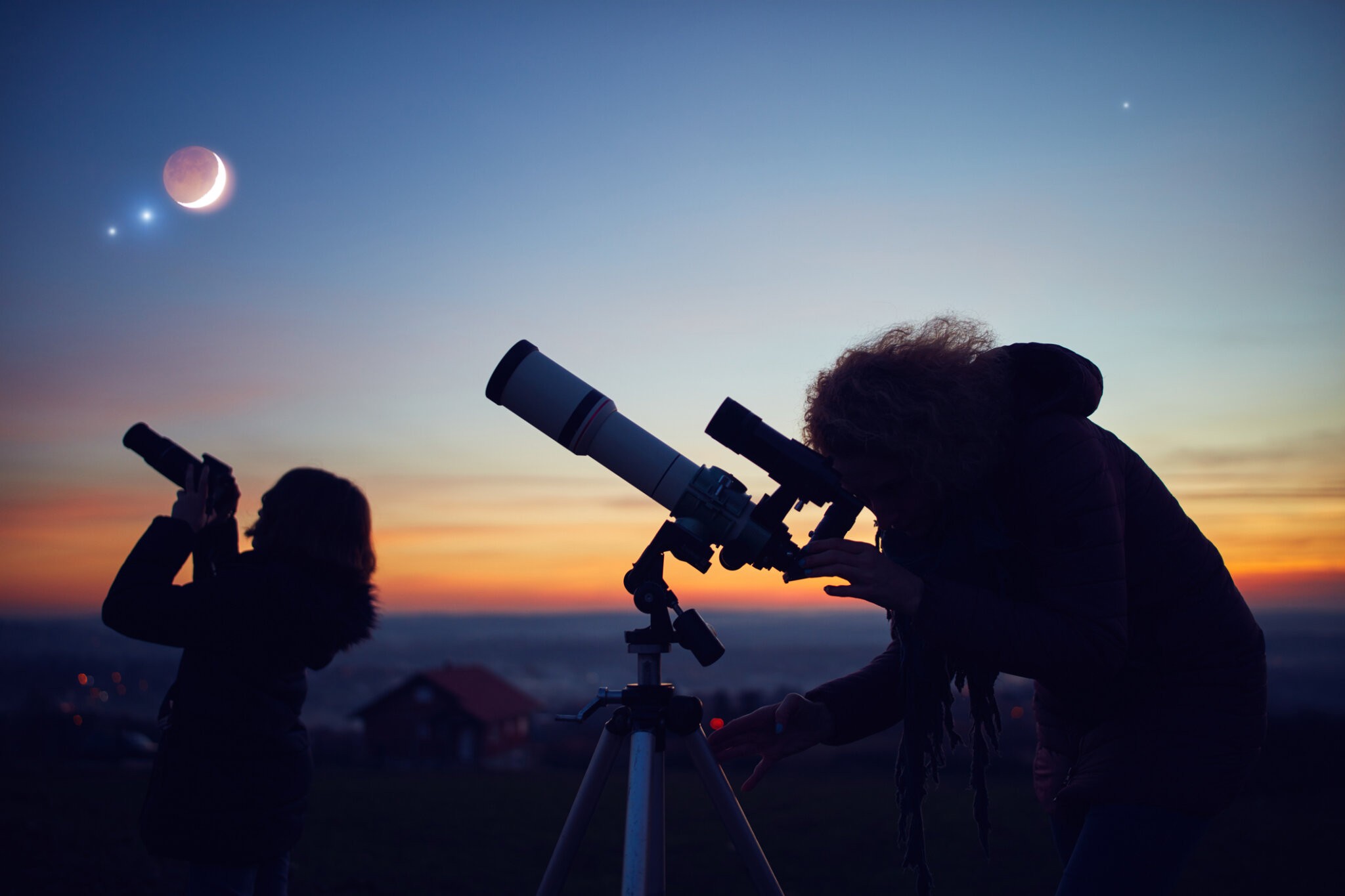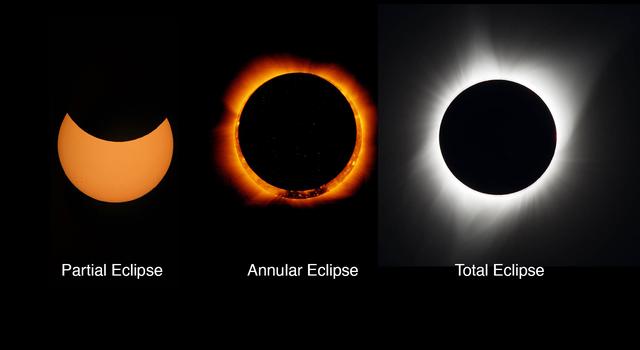A Rare Celestial Show: Where to Watch the Solar Eclipse in the Hamptons & North Fork

The first total solar eclipse to pass over New York State in nearly a century is drawing crowds upstate to where the event will be best viewed on April 8, but on the East End the partially visible eclipse is also fueling excitement.
Observatories, parks and libraries are hosting eclipse viewing parties in the Hamptons and on the North Fork for those who are staying put and not driving eight hours to Buffalo to catch a glimpse of the Moon blocking out the sun for a few minutes. Viewers on Long Island will still be able to see about 90% of the eclipse, which will appear more like a crescent sun but will still require special glasses to be viewable without causing eye damage.
“It’s almost a religious experience,” said Fred Walter, a professor of astronomy at Stony Brook University who witnessed the most recent total solar eclipse to pass over the South and West in 2017. “It’s hard to describe what happens when the sun disappears … in the middle of the day and is surrounded by the corona, which is about the size of the full Moon, and then it comes back. It really is an amazing spectacle.”
The total solar eclipse will make landfall along Mexico’s Pacific coast and cross into Texas and 14 other U.S. states, before exiting over Canada. At 4 minutes and 28 seconds, it will last almost twice as long, at 200 miles across it will cast a shadow twice as wide, and with about 44 million people residing in its path it will draw an even wider audience than the total solar eclipse that stretched coast-to-coast in the U.S. six years ago.
On the East End, the partial eclipse should begin around 2:13 p.m. and is expected to end around 4:37 p.m. with the maximum coverage of the sun is expected to occur at approximately 3:27 p.m. As of press time, the weather appeared to be optimal for watching the astronomical event, with sunny skies in the forecast for Long Island on Monday, according to the National Weather Service.
“We encourage people to take advantage of this unique opportunity, but we also encourage them to do so safely,” said Southampton Town Emergency Manager Ryan Murphy, who urged residents not to look directly at the eclipse without wearing ISO 12312-2 rated eye protection.
Eclipses occur about every 18 months somewhere on Earth. What is rare is one occurring near Long Island.
“There’s not going to be another one in this area for many, many years,” said Alan Cousins, vice president of the Southold-based Custer Institute and Observatory, the oldest public observatory on Long Island, where tickets are sold out for their special eclipse event. “The one coming up Monday is the closest convenient one for, potentially, our lifetime.”
He noted that the next eclipse to pass through the mainland U.S. will be in the Dakotas and Montana in 2044 and the following year another will pass through the Southwest, neither of which are especially close. The next total solar eclipse to pass over New York is expected to be entirely visible on Long Island — in 2079. It would be the first to pass through the New York Metro area since 1925.
State officials have been planning for months for the hundreds of thousands of tourists expected to descend upon upstate New York for the occasion.
“I encourage anyone traveling for this experience to plan on arriving early to their destination,” Gov. Kathy Hochul said. Hotels in the totality zone are largely booked for the occasion. The state Department of Transportation has been urging drivers to use mass transit on April 8 to avoid any potential eclipse-related traffic and the possibility of accidentally looking at the eclipse while driving.
The Nassau County-based Amatuer Observer Society of New York, which also has a remote observatory on the grounds of the Custer Institute, has been helping coordinate local viewing events given its expertise. The group boasts its members include the world’s three of the top five umbraphiles — people who chase eclipses — who have racked up more than 20 hours of time in the shadow of the Moon in their lifetime since the 1950s.
Jason Cousins, the group’s president, who has no relation to the Custer Institute vice president, said, “It is really a once in a lifetime event.”

EAST END SOLAR ECLIPSE EVENTS
Southold Free Library
Friday, April 5, 4–5 p.m.
Create solar eclipse T-shirts, cookies and get special viewing glasses. Materials fee is $10.
53705 Main Road, Southold.
East Hampton Library
Monday, April 8, 2–4 p.m.
Join lawn games, enjoy refreshments and partake in eclipse crafts for the kids. Free glasses while supplies last.
159 Main Street, East Hampton.
Westhampton Free Library
Monday, April 8, 3–3:30 p.m.
Complementary safety eclipse glasses will be provided to visitors as supplies last.
7 Library Avenue, Westhampton Beach.
WHAT TO KNOW ABOUT THE ECLIPSE
What’s a Total Solar Eclipse?
The Moon will line up perfectly between the Earth and the sun at midday, blotting out the sunlight. The full eclipse will last longer than usual because the Moon will be just 223,000 miles from Earth, one of the year’s closest approaches. The closer the Moon is to Earth, the bigger it is in the sky from our perspective, resulting in an especially long and intense period of sun-blocked darkness. Totality will last the longest over Mexico at 4 minutes, 28 seconds. Elsewhere along the track, like in Syracuse, New York, totality will last just 1 1/2 minutes.
What’s the Eclipse Path?
The Moon’s shadow will slice a diagonal line from the southwest to the northeast across North America, briefly plunging communities along the track into darkness. Totality will enter the continent at Mazatlan, Mexico, and exit at Newfoundland in Canada. In between, 15 U.S. states from Texas to Maine will experience totality, including snippets of Tennessee and Michigan. It will be a repeat for Cape Girardeau, Missouri, and Carbondale, Illinois, which were also in prime position for 2017’s total solar eclipse.
A Comet During the Eclipse?
During totality, you may be able to spot a comet along with four planets, if you’re lucky. Jupiter will be to the left of the sun and Venus to the right. Saturn and Mars will be to the right of Venus, but fainter. The solar system’s three other planets will be in the vicinity, but virtually impossible to see with the naked eye. Comet 12P/Pons-Brooks is swinging past Earth, as it does every 71 years. Still faint, it will be positioned near Jupiter during the eclipse. But it will take a sudden outburst of dust and gas to see this so-called devil comet without a telescope, according to Anita Cochran of the University of Texas at Austin. But don’t waste time looking for it. “There is lots to see and not that long a time,” she said via email.
When’s the Next One?
After Monday, the next total solar eclipse won’t occur until 2026. But it will graze the top of the world, dipping into Greenland, Iceland and Spain. The next one in 2027 will march across Spain and northern Africa, with totality lasting an incredible 6 1/2 minutes. North Americans will have to wait until 2033 for another total solar eclipse, but it will be limited to Alaska. In 2044, Western Canada, Montana and North Dakota will have front-row seats. And in 2045, the U.S. will once again experience a coast-to-coast total solar eclipse.
-Associated Press








